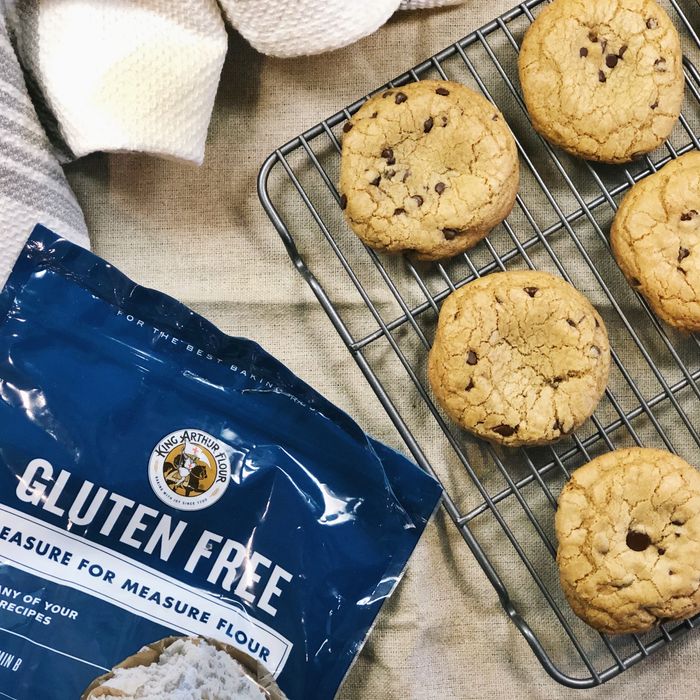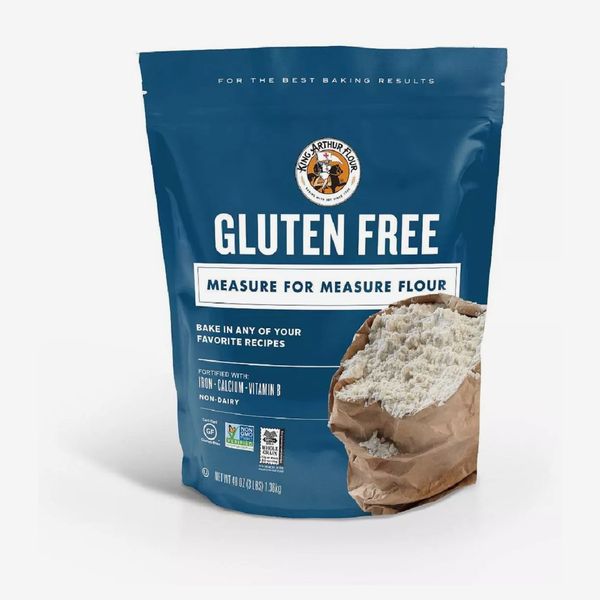
You may have noticed some posts from our friends at the Strategist on Grub Street. They’ll be dropping in every now and again, sharing their expertise on the basics you don’t have time to research, and the weird and wonderful things you don’t yet know you need.
Earlier this year, after embarking on a doctor-recommended elimination diet, I discovered part of my plethora of digestive issues (most of which are a touch too personal to list here) came from being severely gluten-intolerant. I’ve learned to adapt to my new diet in many ways that I didn’t feel like were major sacrifices — like using oat milk in lieu of regular milk and eating brown-rice pasta instead of regular pasta. But the hardest part was saying good-bye to all forms of bread, baked goods, and lots of snacks. My dad is a spectacular baker — seriously, check out his Instagram — so my house has always been filled with fresh loaves of bread, homemade pizza, bagels, and whatever cookies he feels like making that day. But I never wanted my dad to feel bad for making a dessert for a family dinner that I couldn’t eat, and besides, most gluten-free baked goods I’d tried were truly horrible: hard, weirdly textured, with a generally off taste. So I figured I’d just have to learn to go without.
While I was in the midst of a pity party, my father sent me a picture from the grocery store of some King Arthur Measure for Measure gluten-free flour. “Whatever,” I thought. I had no reason to believe this flour wouldn’t be as disappointing as others we tried in the past, producing cookies and brownies that fell apart because of a lack of a binding agent, or a counter top covered with gluey, failed baking experiments as we tried to dial the right ratio of gluten-free flour to replace the all-purpose stuff. But, I’d soon learn, this stuff’s different.
This flour is made from mostly white rice and brown rice instead of wheat, which makes it lighter than regular all-purpose flour. And while it does have a fair amount of additives in it — such as tapioca and potato starch, cellulose, and xanthan gum — those additives mean the flour acts very similarly to all-purpose flour when used in non-gluten-free recipes, without adding dozens of other ingredients ourselves. So instead of having to do complicated baking math to figure out the conversion between all-purpose flour and gluten-free flour, we can do a one-for-one swap. And though King Arthur’s flour isn’t the only one on the market that claims to be measure for measure, it’s one of the few I’ve found that doesn’t use dairy or powdered milk as a binder. (Cup for Cup, another popular brand, does, and that’s a nonstarter for me, given my other dietary issues.)
All this means that we can bake anything we want without much of a hassle, because there’s less trial and error — and, in turn, fewer failed baking projects. The first time we tried it, we made brownies (with these allergy-free chocolate chips that I also recommend), and they tasted exactly the same as brownies made with regular, all-purpose flour. We moved to muffins, banana bread, Irish soda bread, and cookies after our initial test. Like the brownies before them, each recipe easily converted to gluten-free and had a similar texture and taste as they would with regular flour, yet they didn’t cause me excruciating pain.
But the flour isn’t just useful for making baked goods. My dad has thickened gravy with it to have over turkey, and we’ve made fish and chips, which came out just as crispy as a regular flour batter would. It can’t be used to make bread — we’re still figuring out how to do that, though we have had some success making rolls with this King Arthur mix — but for just about every other baked good you could want, this flour is my go-to, and it doesn’t feel like you’re getting the shorter end of the stick. Plus, while everyone is hunting for bags of regular flour, this is still readily available to buy.
The Strategist is designed to surface the most useful, expert recommendations for things to buy across the vast e-commerce landscape. Some of our latest conquests include the best acne treatments, rolling luggage, pillows for side sleepers, natural anxiety remedies, and bath towels. We update links when possible, but note that deals can expire and all prices are subject to change.













